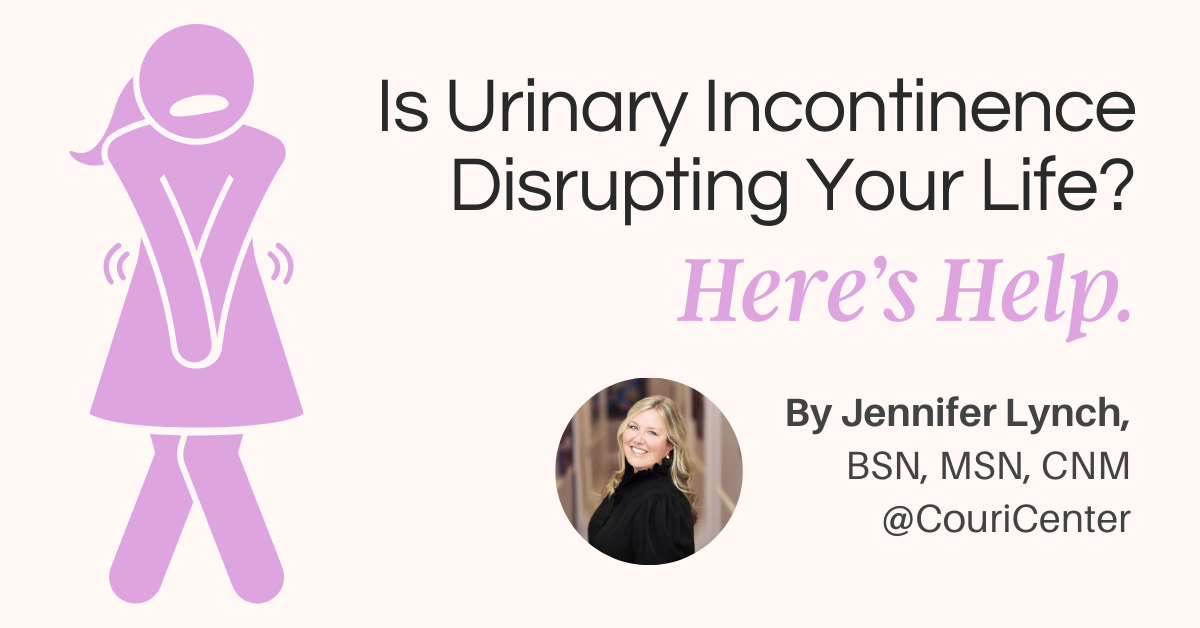
Summary
Urinary incontinence affects millions of women but often goes unreported due to embarrassment. In this article, Jennifer explores the common causes, risk factors, types, and treatment options for urinary incontinence, along with prevention tips to help women regain confidence and improve their quality of life.
Understanding Urinary Incontinence: Why It Matters
Urinary incontinence — “the loss of bladder control” or “leaking urine” — is a symptom that can interrupt our careers, our personal relationships, exercise, and even intimacy. Incontinence can also lead to various health issues including skin irritation, an increase in urinary tract infections, psychological distress, and as we age, can lead to an increased risk of falls.
The severity of urinary leakage can range from occasional leakage with sneezing or coughing to daily leakage necessitating the regular use of a pantyliner or pad.
Urinary Incontinence: A Common Yet Underreported Issue
Due to embarrassment, many patients with urinary incontinence fail to report symptoms, so the actual prevalence is far greater than reported. Urinary incontinence affects at least 25% to 45% of all adult American women.
More than 25% of teenage and college-aged female athletes experience incontinence, with more than 90% withholding incontinence information from their primary care clinicians.
Key Risk Factors for Urinary Incontinence
-
Gender: Women are more likely to experience stress incontinence.
-
Age: As we age, the muscles in your bladder and urethra weaken. Women also experience a loss of estrogen which can change the lining of the bladder and increase incontinence.
-
Being overweight: Extra weight increases the pressure on your bladder and surrounding muscles.
-
Smoking: Tobacco use can increase your risk of urinary incontinence.
-
Family history: If a family member has experienced incontinence, you are more likely to develop it.
Types of Urinary Incontinence
-
Stress urinary incontinence: Urine leaks when you exert pressure on your bladder by coughing, sneezing, laughing, lifting, or exercising.
-
Urge incontinence: A sudden urge to urinate followed by involuntary loss of urine.
-
Overflow incontinence: Frequent or constant dribbling of urine due to a bladder that doesn’t empty completely.
-
Functional incontinence: Physical or mental impairment keeps you from making it to the toilet in time.
-
Mixed incontinence: Experiencing more than one type of urinary incontinence.
Treatment Options for Urinary Incontinence
Treatment for urinary incontinence ranges from conservative approaches — including lifestyle modifications, pelvic floor physical therapy, pessary use, and EMSELLA treatment — to medication management and surgical interventions, which would necessitate a referral to a bladder specialist.
How to Help Prevent Urinary Incontinence
While prevention of urinary incontinence isn’t always possible, several strategies can help decrease your risk:
-
Maintain a healthy weight
-
Practice pelvic floor exercises (Kegel exercises)
-
Avoid bladder irritants such as caffeine, alcohol, and acidic foods
-
Eat more fiber to help prevent constipation, which can contribute to incontinence
-
Avoid or quit smoking
Don’t Ignore the Symptoms: Talk to Your Provider
Though it can feel uncomfortable discussing symptoms of incontinence, it is important to bring it up at your regular gynecologic check-up. Incontinence can limit your activities and significantly impact your quality of life, but we’re here to help! Schedule below to discuss your options.
-Jennifer Lynch, @CouriCenter
CONTACT US-ARTICLE
References
-
Mixed Urinary Incontinence. Harris, Shauna; Leslie, Stephen W.; Riggs, John. StatPearls (Internet). Treasure Island (FL): StatPearls Publishing; Jan 2024.
Disclaimer: This blog article is intended for informational purposes only and should not be considered medical advice. Please consult your healthcare provider for personalized medical guidance. The Couri Center for Gynecology and Integrative Women’s Health is not responsible for any actions taken based on the information provided herein.
